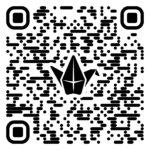Part F: Drone Flight (Programmed Flight Plan)
STEP 1: Before jumping into programming, take a moment to get everything set up for success. Begin by ensuring your drone is fully charged—low batteries lead to unstable flights and inconsistent performance. Then, open the Woven Flight Planner interface (as shown in the image), and click the “Connect Drone” button at the top. Once the drone is paired, take a moment to recall what you’ve learned from manual flight practice.
- Which controls gave you the smoothest lift-off?
- What thrust levels worked best for hovering?
These insights will help you program more intentionally. Remember to fly in a safe, clear area, and treat each flight as a chance to improve your instincts as a pilot and programmer.

STEP 2: Now that you’re connected, it’s time to build your first autonomous flight sequence using the visual programming tools shown on the right side of the interface under Program Sequence. Start by adding a Take Off block (highlighted in blue in the screenshot) and adjust the Duration to 500 ms and Thrust to around 75% using the sliders. Then, click the plus icon next to Move Forward on the left to add a forward motion block—set the Duration to 1000 ms, Thrust to 60%, and adjust the Pitch slider to about 10 degrees. Finally, add a Land block with a longer Duration (e.g., 2000 ms) to ensure a smooth descent. Click Run Program and observe how your drone responds.
- Did it take off and move as expected?
- Was the landing stable?
If not, revisit your settings and make small tweaks—this is how good drone programmers learn.
STEP 3: Once you’re confident with the basics, it’s time to add some flair.
- Try incorporating a Rotate Left or Rotate Right block, available under Available Commands on the left.
- After adding it to your program sequence, set the Duration to 1000 ms, Thrust to 60%, and use the Yaw slider (as shown in the image) to apply a gentle turn—around ±20 degrees works well for a smooth arc.
- Follow this with another Move Forward block to simulate a turn-and-fly maneuver.
- Now, for your final challenge: program a short mission that includes a takeoff, forward movement, rotation, another forward movement, and a safe landing.
Use the interface sliders to fine-tune your values and test different combinations. After you run your program, reflect: What worked well? What needed adjustment? How did your sequence evolve? You’re not just flying—you’re coding a machine to complete a real task.
STEP 4: Now that you’ve practiced basic flight programming, it’s time to show off in a mini drone airshow! Create a 30-second autonomous flight using the Woven Drone Flight Planner. Use at least three different blocks—like Take Off, Move, Rotate, or Land—and adjust sliders for things like Thrust, Yaw, Pitch, and Duration (as shown in the image). Aim for smooth movements and creative combos.
Start by sketching your plan, then build and test it. Try mixing motion and turns to make your flight more interesting. Your goal: a short, safe, and fun drone performance that shows off what you’ve learned!
Once you’re satisfied with your flight, redcord and upload video you’re proud of using the QR code below. In the “Subject” area, include your first name and/or your team members’ names. Click here to see all uploaded media.

